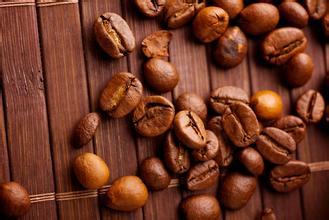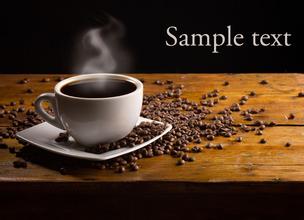Ethiopian Yerga Coffee Estate Coffee Bean Flavor Description Taste Treatment Introduction
Introduction to the taste treatment method of Yega Snow Coffee Manor Coffee beans produced in Ethiopia
Sidamo grows in the southernmost Ethiopian plateau at an altitude of 4600-7200 feet (Sidamo province), southeast of Jima, just south of the capital, usually with obvious sweetness and favored by most people. its annual output is about 225000bags/60kg, with beans smaller than Longberry and greenish in green. in the Xidamo sun drying field, the coffee is placed in a hemp net wooden rack, and the workers take turns to stir the coffee manually in the sun. Sun Sidamo is usually marked with G4 exits, while water-washed Sidamo has more G2 exits because of its better sun treatment. The taste of the sun is close to the smell of flowers, but it is about a little earthy. Water washing has a nutty fruit aroma with a slight cocoa aroma, but what the two pieces have in common is smooth taste and viscosity, comfortable and pleasant acidity and fragrance. The producing area is very close to Yejaschefine, and its flavor is also very similar. After delicate washing or sun treatment, it also has floral and citrus flavors, and its sour taste is supple, and its price is as good as that of Yejasuffe. Like Yejasuffe, this variety has medium-sized beans but also a small-grain variety with dwarf plants. Sidamo coffee is generally light to medium roasted to retain the bright sour taste and intoxicating floral aroma of the variety.
Harald (Harar) is located in the Eastern Highlands of Ethiopia (Harerge province) and grows between 5000 and 7000 feet above sea level. Most of the raw beans are medium size and long at both ends, with yellow or golden green color, strong chocolate smell when baking, wild taste with moderate acidity and rich texture, very typical mocha flavor, good Hara with jasmine and similar fermented wine aftertaste. Today, Hara still uses the traditional sun method to treat raw beans. Caffeine is famous for its miscellaneous fragrance and is typical of the ancient morning flavor. It is listed as the "Ethiopian double Star" alongside Yega Snow. Harald production area has a dry and cool climate, all using the sun treatment method, if the defective beans are picked clean, it is easy to drink berry aroma, with a slightly pleasant fermented miscellaneous aroma. However, farmers here are used to mixing fine products with commercial grade, and the quality of coffee beans is not stable.
The rich and even taste is the most attractive feature of Ethiopian Yega snow coffee. It is known as the best coffee bean in Ethiopia and is the representative of East African boutique coffee. Yirgacheffe is undoubtedly the most unique coffee in the world today. Most of the refining methods of Yirgacheffe are washed, which is fermented and shelled in a washing tank for about 72 hours and dried directly outside the factory building. After the raw beans are manually selected and qualified by the Ethiopian Coffee Cocoa Management Agency, they are traded and exported through competitive bidding. Its annual output is about 225000 bags (each bag of 60kg). In the past, it was mainly sold to Northern Europe (mainly Germany) and Japan. Recently, it has gradually attracted the attention of North America. Yirgacheffe G1 is a grade specially made by Mitsubishi of Japan to Ethiopia Coffee&Tea Authority. It first appeared on the market in 2002-03. The method of producing G1 grade beans is not the same as the general screening, but from the raw beans in the Knoga area with the highest elevation and good soil in Yirga village, which is strictly hand-selected. The size of the raw beans is almost the same, the appearance is quite beautiful, and there are almost no defective beans, and it is more likely to show the characteristics of Yirgacheffe after drinking. Because of the strict production process, the annual output of Yirgacheffe G1 is very rare.

Important Notice :
前街咖啡 FrontStreet Coffee has moved to new addredd:
FrontStreet Coffee Address: 315,Donghua East Road,GuangZhou
Tel:020 38364473
- Prev

Guatemala La Minita Coffee Flavor description Grinding scale Variety area
Flavor: [dry] chocolate, coffee flowers, active volcanic ash smoke, cinnamon, apricot [wet] caramel, rum, cocoa [sipping] clean and smooth entrance, soft sweetness in the front accompanied by the unique active volcanic ash smoke of Guatemalan coffee, sweetness and strong floral aroma in the middle, floral and cocoa fragrance in the back, rich and persistent floral fragrance.
- Next

Flavor description of coffee beans in Jinchu Valley, Kenya introduction to the regional treatment method of grinding scale manor production
Flavor description of Kam Chu Valley Coffee beans in Kenya the regional treatment method of grinding scale manor introduces that large farms usually have independent treatment facilities. A large number of small farmers usually pick ripe coffee fruits by hand. Coffee picking is a labor-intensive job that requires the whole family to deploy and even hire workers during the harvest season. The fresh fruits of the picked coffee need to be delivered to the cooperative in time.
Related
- Detailed explanation of Jadeite planting Land in Panamanian Jadeite Manor introduction to the grading system of Jadeite competitive bidding, Red bid, Green bid and Rose Summer
- Story of Coffee planting in Brenka region of Costa Rica Stonehenge Manor anaerobic heavy honey treatment of flavor mouth
- What's on the barrel of Blue Mountain Coffee beans?
- Can American coffee also pull flowers? How to use hot American style to pull out a good-looking pattern?
- Can you make a cold extract with coffee beans? What is the right proportion for cold-extracted coffee formula?
- Indonesian PWN Gold Mandrine Coffee Origin Features Flavor How to Chong? Mandolin coffee is American.
- A brief introduction to the flavor characteristics of Brazilian yellow bourbon coffee beans
- What is the effect of different water quality on the flavor of cold-extracted coffee? What kind of water is best for brewing coffee?
- Why do you think of Rose Summer whenever you mention Panamanian coffee?
- Introduction to the characteristics of authentic blue mountain coffee bean producing areas? What is the CIB Coffee Authority in Jamaica?

